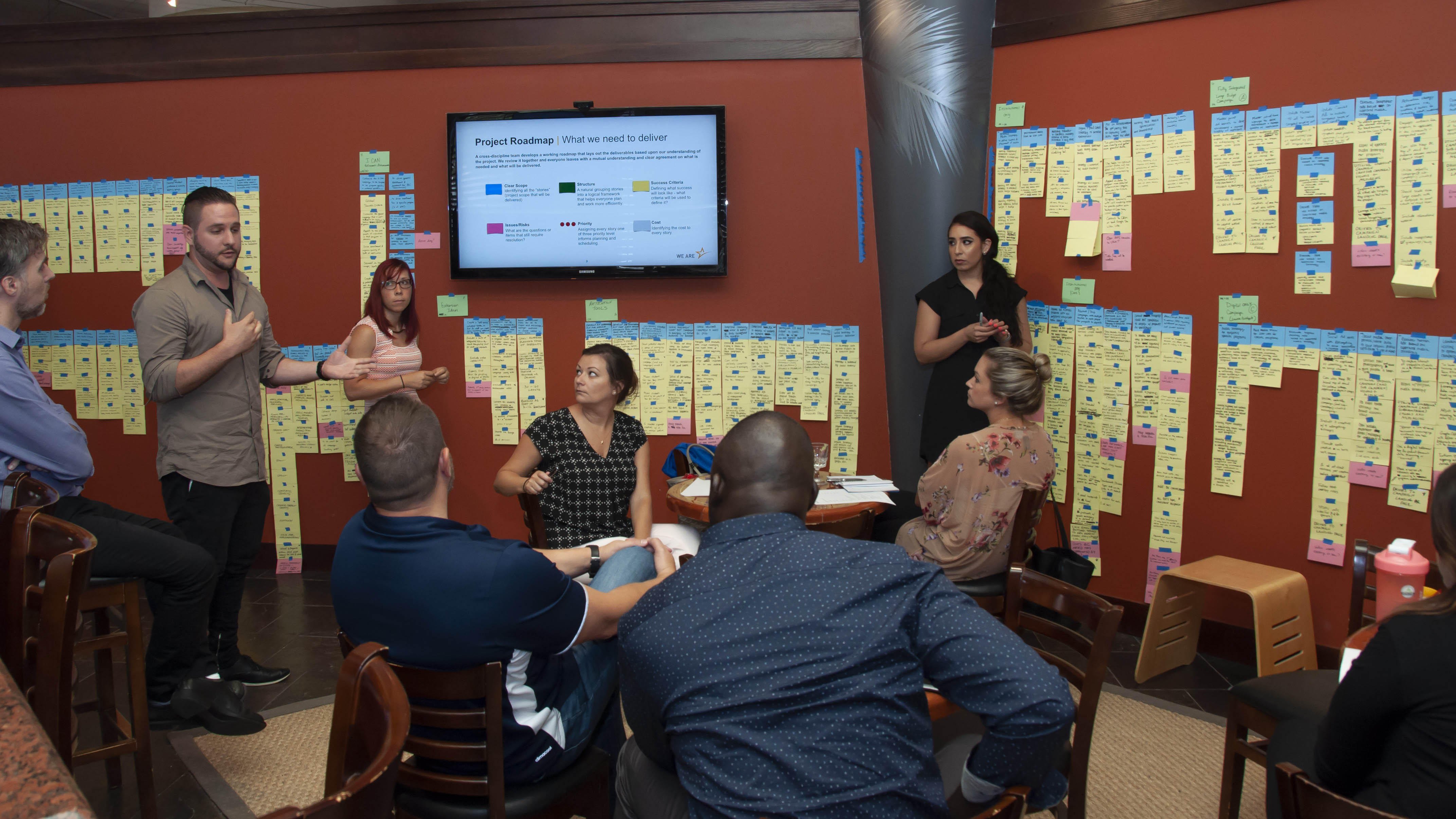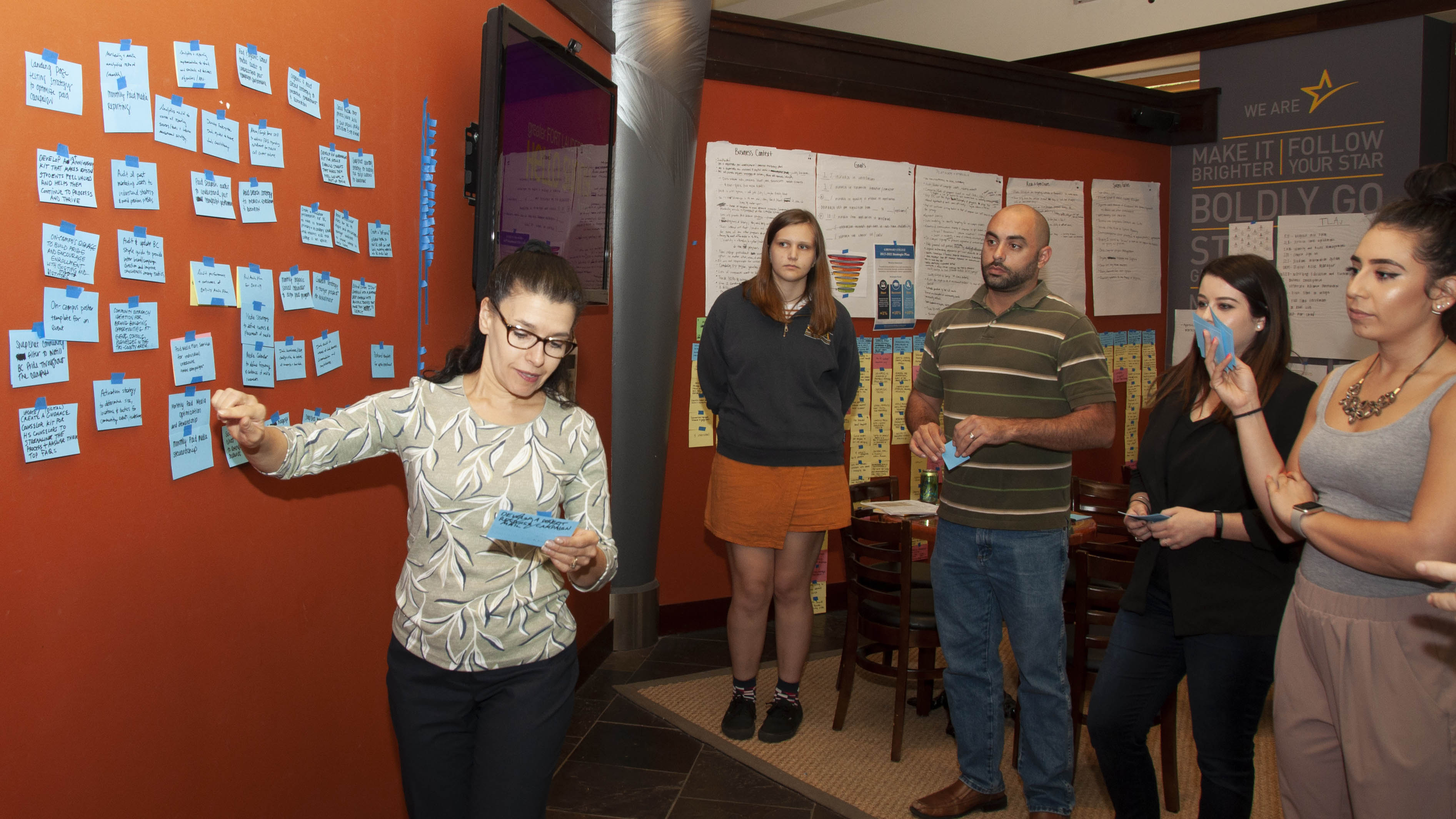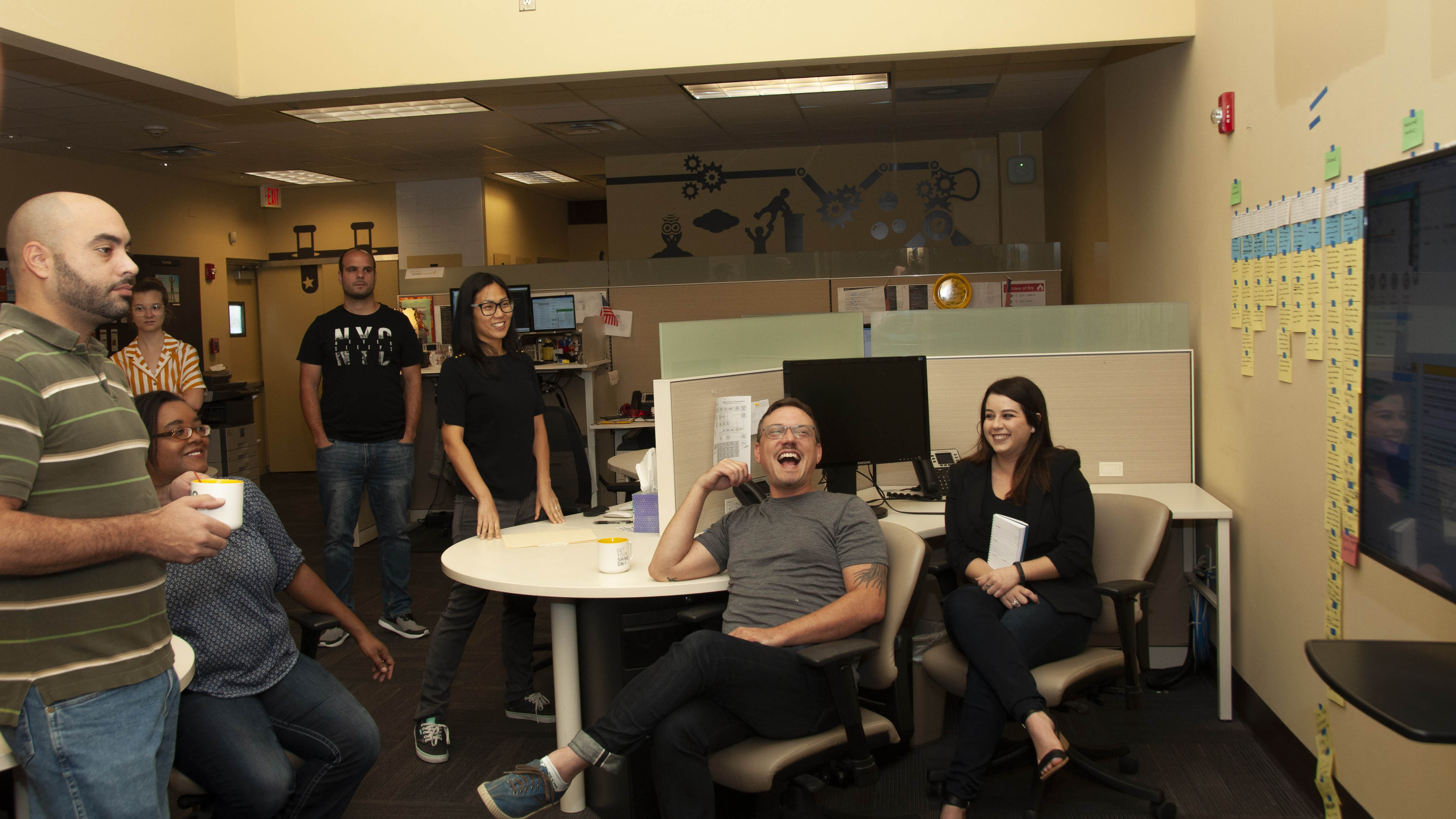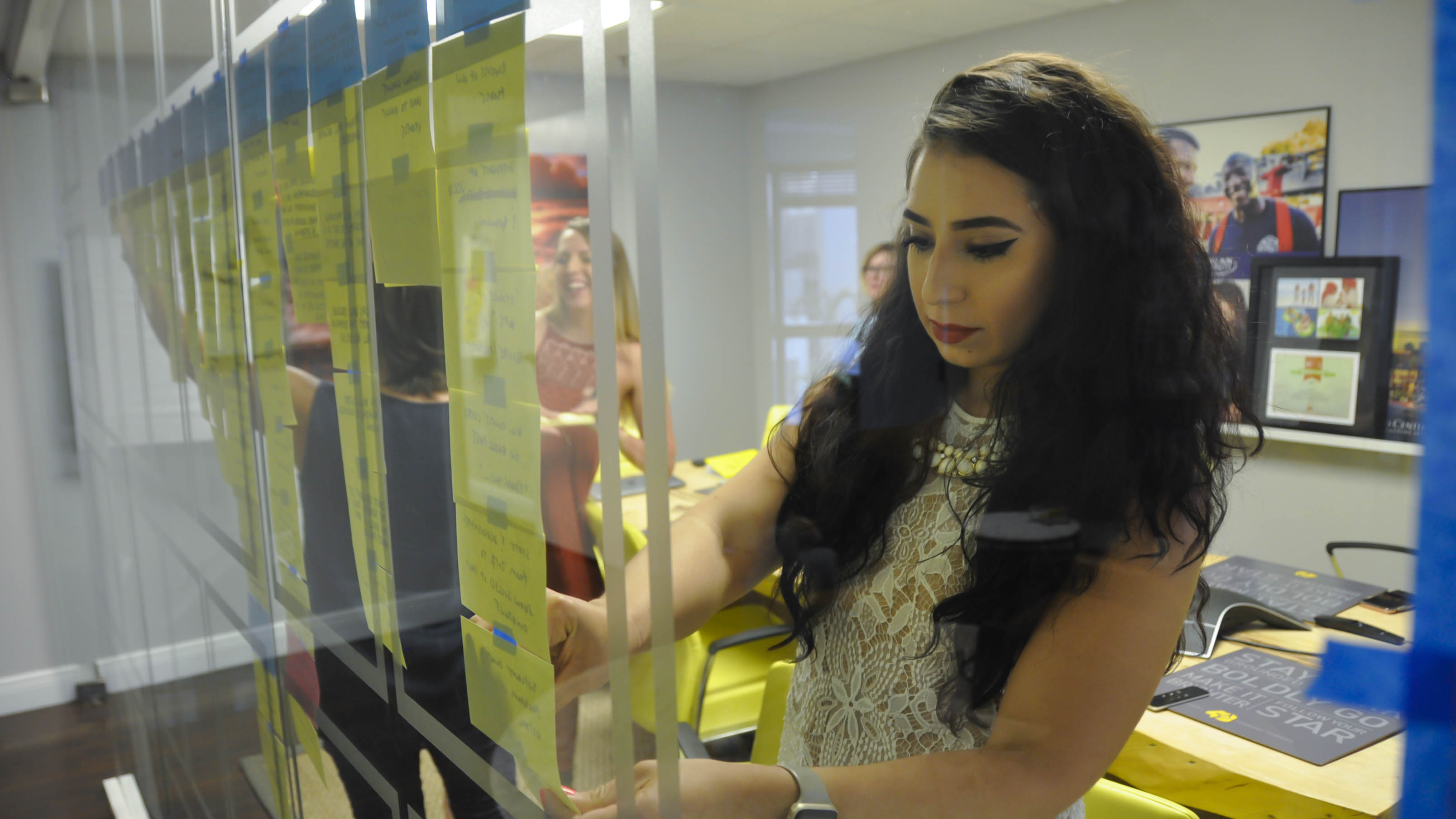Aug 14, 2019
Starmark’s Agile approach featured in the Wall Street Journal

Agile
According the the 4As (American Association of Advertising Agencies), there are roughly 13,000 integrated marketing agencies in the U.S. Starmark is one of 1,000 or fewer who are Agile. Today, one of those agencies was featured in The Wall Street Journal. Hint: it’s Starmark.
Work & Family reporter for The Wall Street Journal, Sue Schellenbarger, interviewed Starmark President, Jacqui Hartnett, Chief Digital Officer, Brett Circe and Associate Creative Director, Jacob Edenfield, about the agency’s four-year journey embracing Agile. It’s a topic of interest for companies large and small looking for ways to build higher functioning teams and attract higher caliber talent.
Agile is about creating mutual understanding with clients
It has been four years since the agency moved from a traditional waterfall approach to following Agile Methodology. This far along, Starmark still encounters many connections, prospects, clients and partner agencies who think Agile is a project management fad, a simple process change – or worst of all – an easy button that management can use to makes work quicker and cheaper, according to Brett Circe. “In reality, it’s just more efficient because we have a better shared plan with our clients, and that means we make better use of their time and marketing dollars. We cut out all the stressful, expensive rework that makes projects drag on at the end.”
What every new client and new employee needs to understand is that there are real benefits to better up-front planning. Our roadmaps are built and informed by the group of experts who will actually do the work. As a client, you walk through what success looks like with the people who can get you there. – Brett Circe, Chief Digital Officer, Starmark

Agile workstreams have transformed the way the agency works
Starmark is divided into two independent, multidisciplinary teams, called workstreams. Each of these workstreams is made up of a variety of experts – from front-end and back-end developers to art directors to copywriters – to serve the needs of a specific group of clients. It’s an obliteration of the department silos that are typical of a waterfall approach.

Clients benefit because they have open communication and contact with the experts doing the work throughout the process. As part of the article, The Wall Street Journal interviewed Starmark client, Brandon Hensler, from NSU about his experience with Starmark and Agile Methodology.
Meetings at Starmark can be brutally honest. But that results in something better than our initial ideas – because Starmark has a whole team from different disciplines working with us. – Brandon Hensler, Executive Director, Public Relations and Marketing Communications at NSU
Instead of projects moving from a group of project management generalists to a creative department and on to production, all the while accumulating scope creep and rework, every project is now roadmapped by all the experts needed to ensure success – and then those experts walk through the plan with the client. Now work gets reviewed with clients during every two-week sprint, so the black-box mystique of the agency fades away, in favor of a more transparent, more experimental, more aligned approach that makes big, ambitious projects go much more smoothly.
Daily check-ins replace endless daily meetings
One of the most important aspects of Agile for advertising and marketing agencies is to start every day with a high-value team check-in meeting, says Jack Skeels, owner of Agency Agile, the company that consulted with Starmark throughout their transition. During the check-in, the team members share relevant accomplishments, schedule time to collaborate or review work in progress, discuss blockers and make a shared plan for the coming day. It’s one 15-minute meeting that eliminates the need for constant status update interruptions, stop-bys and chats about when to expect work or schedule a review.

“When a team meeting is done right, there are few things more inclusive and soothing. – Jack Skeels, Owner, AgencyAgile
It’s called the most important meeting of the day for a reason. With a set of shared commitments, the team is free to follow its plan for the day, working individually and in groups to accomplish the work they set out to do. This is called flow time, and at Starmark it runs from 11:00 a.m. to 5:00 p.m. This leaves time in the morning to align and time in the afternoon for updates. The majority of the day is unimpeded time designed to be free of unexpected interruptions. For clients, this means a greater focus on their work, more frequent work reviews and better visibility into how each story within the project is progressing.
Continuous improvement is part of the Agile package
Four years in, Starmark is still improving its approach with a retro at the end of every two-week sprint. It’s a time to share announcements, celebrate the work accomplished and an open forum for every member of the company to discuss ways to work better together in the future. This week’s Wall Street Journal article is sure to be a topic of conversation.

Obviously, we’re incredibly excited to be featured in The Wall Street Journal. More than that, though, we’re using this as a reminder for ourselves and our clients to celebrate making this shift. Yes, we’re asking something of each and every client to come on this journey with us, but the results are better work and better working relationships. That’s what we’re celebrating today, most of all. – Jacqui Hartnett, President, Starmark
Read the article at The Wall Street Journal.
